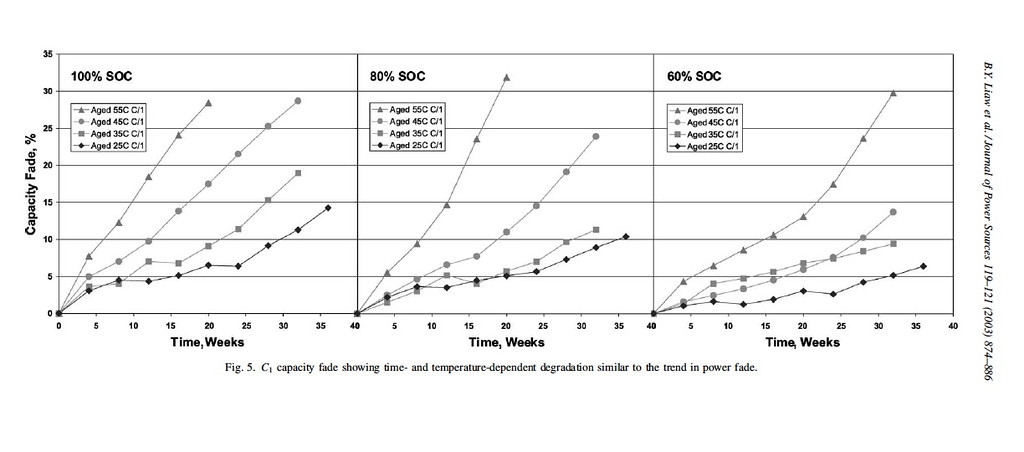Just wanted to give an update on how this new gauge face is working. I find it very easy to count out the bars and know where I "should" be for best battery life. Since my town is pretty small and I have both home and work L2 charging, I can live with this reduced range pretty easily. My 5 green bars get me through about 2 or 3 days of around town driving. I usually know when I'll be needing the extra charge (like a bay area meeting!

) and go to 80% or 100% when I need to.
I have to admit- I'm attached to the rest of the car. There's a lot that is done well. There's a good chance I'll buy out the lease even if it doesn't make the best financial sense. I already am planning a second life for my battery as part of my future house, so there is good reason for me to treat the pack kindly, even if I don't officially own it yet.

The good things going for my battery:
I'm basically mimicking how the volt treats its battery by staying within the ideal state of charge "window". Since the traction pack is warranted for 10 years or 150,000 miles in California, I imagine they took longevity very seriously. While there's no TMS like the Volt to keep my battery temperature in the ideal range, I do vent my garage with fans. The night time low is in the 60s (should start moving to the high 50s this weekend) and with fans directing the cool night time air under the car I have been successful in getting 5 bars in the morning that stay till lunch. I have solar shading at work most days, however my work charging stations are not shaded. I do the majority of my charging at work between 8-11 am.
The bad things going for my battery:
I do quick charge a lot on the weekends and drive like a bat out of hell. I'm running a 3.9 mi/kWh average. I also think my dealer left the car at a high state of charge for a few months before I got it. It's got a pack from Feb 12 and I didn't get it till the end of June. Luckily the weather in Costa Mesa is mild. My gid count on my second or third charge was 271. I do not currently have a gid meter.
Is this practical for most people? Probably not. If the pack size was double, maybe. Why I'm doing this is to
prove what is possible if you treat lithium batteries like they should be treated. Only lead acid likes to be charged to full. The rest like to stay around 50%, with 30% being the ideal storage SOC for lithium. Oh, and all batteries hate heat. :roll:







